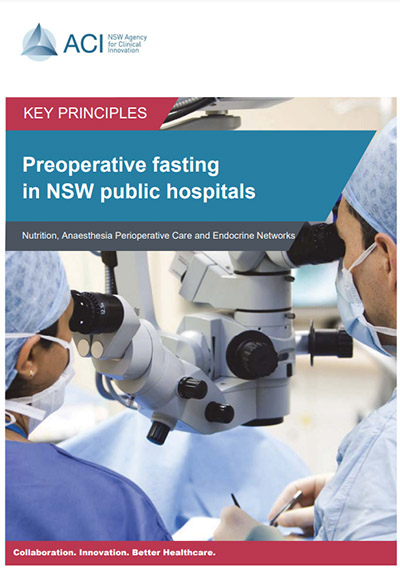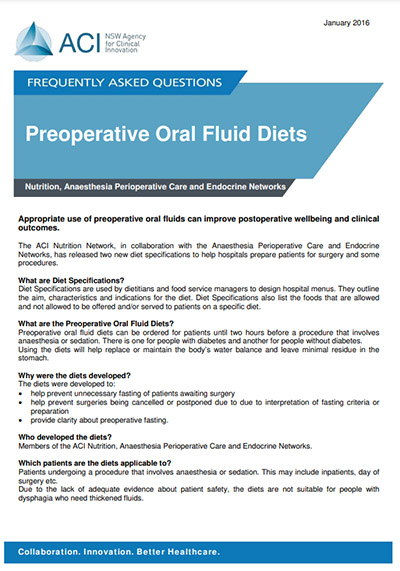Preoperative fasting is necessary for a range of patient cohorts. This set of resources provides guidelines for safe preoperative fasting and fluid diets in operating theatres in NSW hospitals.
The aims of these resources are to:
- minimise cancellations of surgery as result of fasting interpretation by clinicians
- provide better quality of care to patients, particularly the frail aged
- help facilities achieve the Delirium clinical care standard from the Australian Commission of Quality and Safety in Healthcare.

Key principles for preoperative fasting
Published: May 2016. Next review: 2024.
Understand the principles, timelines and patient cohort considerations of preoperative fasting to prepare patients for surgery.

Frequently asked questions – preoperative oral fluids
Published: January 2016. Next review: 2024.
Read this background to support the use of the diet specifications at your hospital.
Diet specifications
These diet specifications help hospital staff prepare patients for surgery and some procedures. Patients continue oral fluids until two hours before a procedure to replace or maintain the body’s water balance and leave minimal residue in the stomach.
Preoperative oral fluid diet specification
Published: May 2016.
Preoperative oral fluid diet specification for people with diabetes
Published: May 2016.